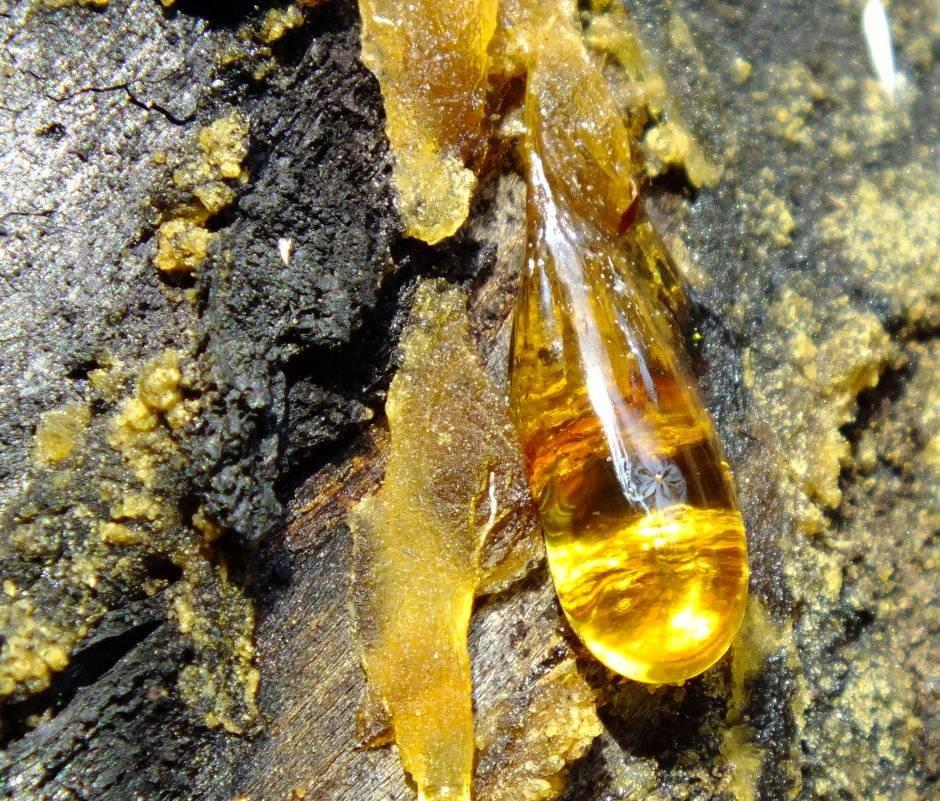Content
The use of the snakehead plant is associated with its rich chemical composition. Leaves, stems and flowers contain essential oils, flavonoids, organic acids, trace elements and other beneficial compounds. Recipes for using the plant in folk medicine, as well as a description of the rules for growing it, can be found in the presented article.
Description of the snakehead with photo
The snakehead is a genus of plants from the Lamiaceae family. Most species are perennial crops, although there are also annual representatives, for example, snakehead thyme. The stems are bare and erect, but can also spread to the ground. They reach a height of 50-70 cm.
The leaves of the snakehead plant are rich green in color, the edges are pinnately dissected, and are entire. They grow on petioles or directly from the stem (sessile type), arranged oppositely.
The photo shows that the flower of the snakehead plant resembles the open mouth of a snake - that is why it got its name. The inflorescences are quite dense, sometimes spaced, represented by false whorls of 2-6 flowers (sometimes more).

The snakehead is attractive with its original inflorescences
The bracts of the plant have a pinnately dissected shape or are solid. The calyxes are two-lipped, five-toothed, with the upper tooth being larger. The stamens of the flowers of the snakehead plant are of a two-violet type, hidden under the upper lip of the corolla. In this case, the anthers are not covered with anything, bare. The corollas are usually much longer compared to the calyx. The color is varied, mostly bluish:
- purple;
- blue;
- blue;
- lilac;
- pink;
- reddish;
- fawn;
- white (rare).
The plant blooms in July and August and lasts for several weeks. The lower inflorescences bloom first, then the upper ones. Several dozen and even hundreds of flowers are formed on each bush, often up to 400-500.
After flowering ends, the snakehead begins to bear fruit. They form from late August to mid-September. They are oblong-shaped seeds with three sides. The color is brown, with a brown tint.
Types and varieties
In total, there are about 40 species of snakehead plants in nature. They grow in Europe, as well as in Northern Asia, and only one representative is found in North America. In Russia, the snakehead grows in the European part - the middle zone and neighboring regions.
Among the most common types of plants are the following:
- The Moldavian snakehead (Dracocephalum moldavica) is resistant to adverse weather conditions.It does not require care and tolerates drought well. Flowering lasts until the end of September.
- The thyme snakehead (Dracocephalum thymiflorum), on the contrary, begins to bloom very early. The first buds open in early May, the last in the middle of the month.
- Ruysch's snakehead (Dracocephalum ruyschiana) is found in Siberia, the Far East and Central Asia. Average height – 50 cm.
- The large-flowered snakehead (Dracocephalum grandiflorum) is low and shade-tolerant. The plant produces beautiful flowers of a bright blue hue.
- Drooping snakehead (Dracocephalum nutans) tolerates frost and drought well; the plant is often found in the foothills and forest-steppe.
Chemical composition
The benefits of snakehead are associated with its rich chemical composition. Plant tissues contain the following substances:
- essential oil with geraniol, nerol and thymol;
- fatty oil;
- organic acids (oleic, stearic, linoleic, palmitic);
- tannins;
- flavonoids;
- coumarins;
- vegetable proteins;
- B vitamins;
- zinc;
- iron;
- potassium;
- magnesium.
Medicinal properties of snakehead herb
Due to the content of various chemical compounds, the use of snakehead as a medicinal plant benefits different body systems:
- increasing immunity;
- astringent action;
- stimulation of appetite and digestion;
- improved kidney function;
- strengthening the nervous system, mild calming effect;
- prevention of seizures, rheumatism;
- recovery from gynecological diseases;
- anti-inflammatory and antiseptic effect;
- analgesic effect (for headaches and toothaches).
The snakehead plant is used as a general tonic, for example, to restore immunity after an illness.It is also used as an additional treatment for kidney diseases, sinusitis, stomatitis, and rhinitis. Another area of use is for the treatment of arrhythmia, neuralgia, toothache and headache relief.
Application of snakehead herb
The snakehead plant is known not only for its medicinal properties. It is used as an ornamental crop to decorate the garden, as well as for preparing various dishes.
In cooking
The snakehead plant contains quite a lot of essential oils, which give a pleasant, rich lemon smell. Therefore, it is added to various dishes and drinks:
- soups;
- salads;
- marinades;
- bakery;
- soft drinks (kvass, compote, tea);
- alcoholic drinks (vermouth).
The leaves of the snakehead plant are mainly used for culinary purposes. This is where most essential oils are concentrated. Flowers are also used. Add the spice just a few minutes before the dish is ready. Otherwise, all the flavor will disappear due to heat treatment.

The leaves and flowers of the plant are used in cooking
In folk medicine
The snakehead plant has long been known for its medicinal properties. Therefore, in folk medicine it is used to treat various pathologies. Different forms of application:
- water infusion;
- alcohol tincture;
- decoction;
- tea.
Internal use is often practiced, although external use in the form of baths and compresses is sometimes planned. For example, take 200 g of dry raw materials, pour 10 liters of boiling water, leave for half an hour and filter.Then the resulting infusion is poured into the bath and heated in it for 15 minutes. This procedure helps in the treatment of kidney diseases.
Decoctions of the leaves of the snakehead plant help to cope with pyelonephritis, neuralgia, and relieve pain. To prepare it, take a tablespoon of raw material, pour a glass of boiling water and cook in a water bath for 15-20 minutes. Then filter, bring to the original volume, take three times a day (in equal portions).
You can also make tea based on the snakehead plant. To do this, pour a tablespoon of boiling water and leave for 15 minutes. Then filter, divide into three equal portions and use throughout the day. This remedy is good for overwork.
Along with snakehead, other plants can be used to make medicinal tea, such as peppermint and oregano. Take a teaspoon of each component and brew for 15 minutes. Take exactly the same as described above. Medicinal tea is suitable as a sedative.
In cosmetology
The plant is also used as a cosmetic - it is used to prepare massage oil. The recipe is:
- Take a glass of sunflower or olive oil.
- Add a tablespoon of herbs.
- Place in a dark place. They insist for two days.
- Strain, add another spoon and leave for 2 days.
- Then the procedure is repeated, after which a rich aromatic oil is obtained that can be used for massage.
The same snakehead oil can be used in making soap. In some cases, the plant is also used in the production of perfumes.
In landscape design
The snakehead can also be used to decorate the garden.It looks beautiful in different compositions (mixborder, border, alpine slide), against the background of a lawn, in single plantings. Species with creeping shoots are used as ground covers. The main uses of the plant are shown below:
- Planting against the background of a lawn.
- Ground cover.
- Single landing option.
Contraindications for use
Along with the benefits, the use of snakehead can also cause harm. If you follow the dosage and duration of treatment (no more than a month), such phenomena are observed quite rarely. But in some cases the use of the plant is contraindicated:
- individual intolerance;
- allergic reactions;
- pregnancy;
- lactation period.
Growing snakehead from seeds
The snakehead plant can be cultivated from seeds. Moreover, for this it is not necessary to grow seedlings - it is enough to sow in open ground in the first half of May (in Siberia and the Urals it is better a week later). The landing site should be sunny, dry (not located in a low area) and, if possible, protected from the wind.
There is no need to prepare the seeds of the plant in advance. The sowing instructions are as follows:
- Dig up the ground and apply complex fertilizer (40-50 g per 1 m2).
- Clean and thoroughly level the surface.
- Mark several furrows no more than 2 cm deep at intervals of 40-50 cm.
- Plant the seeds of the snakehead plant and sprinkle with a small amount of soil.
- Carefully pour in settled water.
The seeds do not germinate so quickly - you need to wait about two weeks for the first shoots to appear. At first, the growth rate is small. Approximately 2.5 months after germination (i.e. approximately mid-August), the first flowers will appear.However, the very next season the snakehead plant will delight with numerous inflorescences that will open on time (from July to August).
To ensure long flowering of the snakehead plant, it is important to follow certain care rules:
- Regular watering, especially in the first season. It is recommended to give water weekly, or twice a week during drought.
- Periodic loosening, weeding as necessary.
- Fertilize in April, June, July and early August. In the spring, they focus on nitrogen compounds, and in the summer – on potassium and phosphate compounds.
- For winter, the above-ground part of the plants should be cut off almost to the root and sprinkled with a small layer of dry leaves, straw, sawdust or other materials.
Preparation and storage
The snakehead is convenient because it can be collected for harvesting throughout the entire season from May to September inclusive. Leaves are mainly used at the stage of bud formation. You can also harvest the stems and flowers of the plant.
After collection, the raw materials are sorted, laid out in one layer and dried in a well-ventilated area (preferably in the dark). Do not place it in the sun, as the strong heat may cause the essential oils to evaporate. Then the raw materials of the snakehead plant are crushed and placed in paper or fabric bags. Store in a dark, dry place at room temperature for no more than three years.
Conclusion
The use of the snakehead plant is quite wide. The herb can be used for medicinal, cosmetic, and culinary purposes. The flower decorates the garden - both central and remote places. Caring for the plant is simple, so even a novice gardener can cope with its cultivation.
Reviews about the snakehead
















